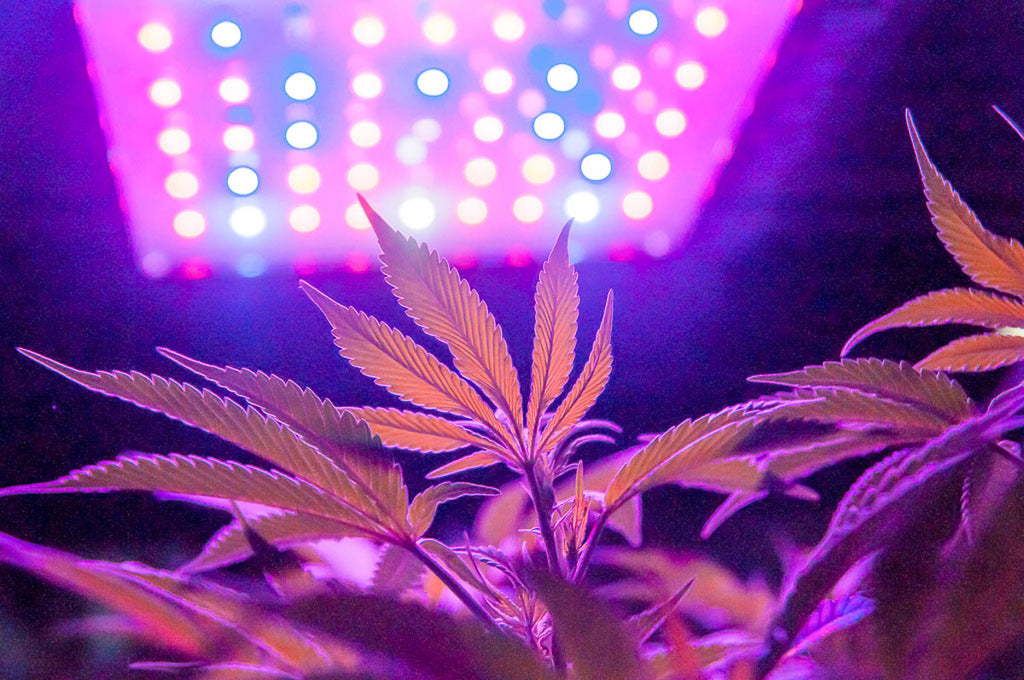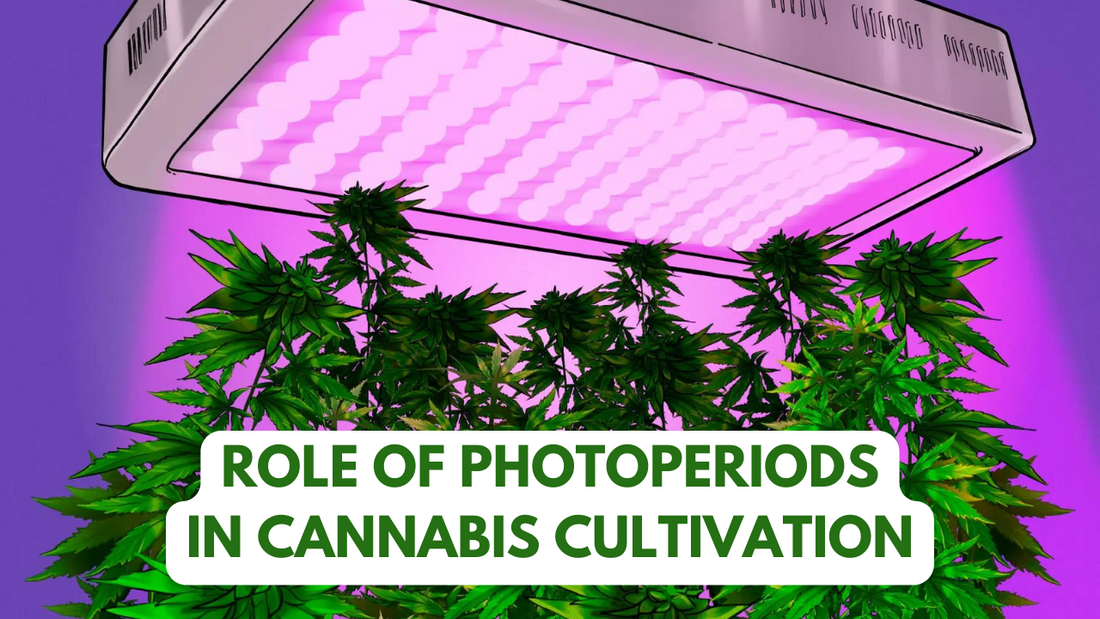Introduction to Cannabis Cultivation
Cannabis cultivation has a rich history that spans thousands of years, with ancient civilizations using the plant for medicinal, recreational, and industrial purposes. As the plant's popularity has grown in recent years, so has the science behind optimizing its growth, with lighting playing a pivotal role.
Brief history of cannabis cultivation
From ancient China to the modern-day United States, cannabis has been cultivated for a myriad of purposes. Historical records indicate its use in rituals, as medicine, and even as a source of fiber. Over time, cultivation techniques have evolved, reflecting the plant's significance in various cultures.

Importance of lighting in plant growth
Light is fundamental to plant growth. It drives photosynthesis, the process by which plants convert light energy into chemical energy, fueling their growth. For cannabis, specific light conditions can influence not just growth but also potency and yield.
Basics of Plant Photobiology
Photobiology studies how plants interact with light, from absorption to the subsequent physiological responses. At its core is the concept of photoperiod, which plays a crucial role in the life cycle of many plants, including cannabis.
Definition of photoperiod
A photoperiod refers to the duration of an organism's daily exposure to light. For plants, this period is crucial as it often determines growth phases, flowering times, and even dormancy.
How plants perceive light: photoreceptors and their role
Plants have specialized proteins called photoreceptors that detect light. These receptors, such as phytochromes and cryptochromes, allow plants to "sense" the light environment and adjust their growth accordingly.
Understanding Photoperiods in Cannabis Growth
Cannabis, like many plants, has growth phases influenced by light duration. Understanding these photoperiods is essential for cultivators aiming to optimize growth and yield.
Definition and importance of photoperiods for cannabis
For cannabis, photoperiods dictate when the plant transitions from the vegetative to the flowering stage. By manipulating these periods, growers can influence when and how the plant flowers.
Short-day vs. Long-day plants: Where does cannabis fit?
Cannabis is typically a short-day plant, meaning it requires long nights to trigger flowering. This is in contrast to long-day plants that flower when nights are short. Understanding this distinction is crucial for effective cannabis cultivation.
The Vegetative and Flowering Stages of Cannabis
Cannabis has distinct growth stages, each with unique light requirements. The vegetative stage focuses on growth, while the flowering stage centers on bud production.
Vegetative stage: Light requirements and growth patterns
During the vegetative stage, cannabis plants need ample light, often 18-24 hours, to grow robustly. This phase is characterized by the development of leaves, stems, and roots, setting the foundation for the flowering stage.
Flowering stage: The switch and its significance
Triggered by a change in light duration, the flowering stage is when cannabis produces buds. This phase requires a more balanced light cycle, typically 12 hours of light and 12 hours of darkness, to optimize bud development and potency.
Manipulating Photoperiods for Optimized Growth
By controlling light exposure, growers can influence cannabis growth, yield, and potency. This manipulation has led to innovations in artificial lighting and cultivation techniques.
Techniques to control light exposure
From blackout curtains to automated light systems, growers employ various methods to control light exposure, ensuring that cannabis plants receive the optimal light duration for each growth stage.
The role of artificial lighting: LEDs, HPS, and more
Artificial lighting, like LEDs (Light Emitting Diodes) and HPS (High-Pressure Sodium) lamps, allows growers to provide consistent light conditions. Each lighting type has its advantages, with LEDs being energy-efficient and HPS offering intense light output.
Benefits of controlled photoperiods: Maximizing yield and potency
By manipulating photoperiods, growers can optimize the growth cycle, leading to increased yields and enhanced cannabinoid profiles. This control ensures that plants flower at the desired time and produce high-quality buds.
The Science Behind Cannabis' Response to Light
Cannabis doesn't just passively receive light; it responds to it. This interaction, driven by photoreceptors and specific light wavelengths, influences the plant's morphology and growth patterns.
The role of phytochromes in cannabis growth
Phytochromes are a type of photoreceptor in cannabis that responds primarily to red and far-red light. They play a pivotal role in signaling the plant to transition from the vegetative to the flowering stage.
Blue light vs. red light: Effects on cannabis morphology
Different light colors influence cannabis growth differently. Blue light promotes compact, bushy growth, while red light encourages elongation and flowering. Balancing these light colors is essential for optimal growth.
Far-red light and the "shade avoidance" response
When cannabis detects an abundance of far-red light, often indicative of shading from other plants, it may exhibit the "shade avoidance" response. This reaction leads to rapid elongation, as the plant "reaches" for more light.
Potential Challenges and Solutions
Like all cultivation practices, manipulating light comes with challenges. However, with knowledge and the right tools, these challenges can be mitigated or even eliminated.
Issues with inconsistent light exposure
Inconsistent light can stress cannabis plants, leading to reduced growth or even hermaphroditism. Ensuring a consistent light cycle, free from interruptions, is crucial for healthy growth.
Preventing hermaphroditism in cannabis plants
Hermaphroditism, where a plant develops both male and female flowers, can be a disaster for cannabis cultivators. One primary cause is light stress. By maintaining a consistent light cycle and monitoring plants closely, growers can reduce the risk of this issue.
Solutions for common lighting problems in cultivation
From using backup generators to investing in high-quality lighting systems, there are numerous solutions to address lighting challenges. Research and innovation continue to provide growers with better tools and techniques.
The Future of Cannabis Lighting Research
As the cannabis industry grows, so does the research into optimizing its cultivation. Lighting research is at the forefront, with new technologies and techniques emerging regularly.
Recent advancements in lighting technology
From spectrum-adjustable LEDs to smart lighting systems that adjust in real-time, recent advancements in lighting technology promise to revolutionize cannabis cultivation, offering growers more control than ever before.
Potential for genetically modified cannabis strains for varied light conditions
With the advent of genetic engineering, there's potential to develop cannabis strains tailored for specific light conditions. Such innovations could optimize growth for various environments, from indoor grows to greenhouses.
Conclusion
Understanding the science behind cannabis lighting and photoperiods is more than just academic; it's practical. For growers, this knowledge translates to healthier plants, higher yields, and better-quality buds. As research continues, the future of cannabis cultivation looks bright, with lighting playing a central role.
References and Further Reading
For those eager to delve deeper into the science of cannabis lighting, numerous studies, articles, and books offer a wealth of information. From academic journals to cultivation guides, the resources available ensure that growers and enthusiasts alike can continue to expand their knowledge.
Photoperiods in Cannabis Cultivation FAQs
|
